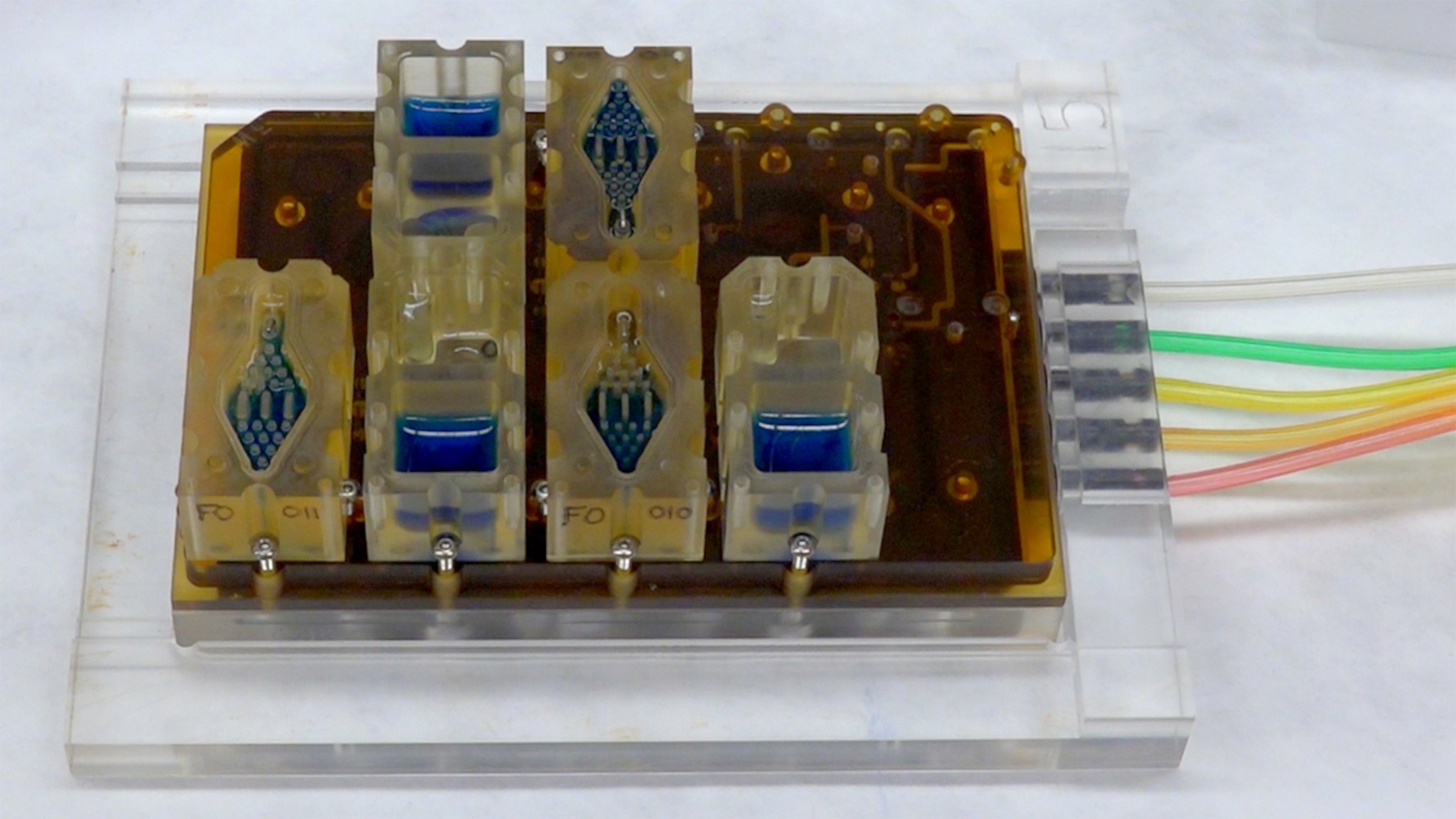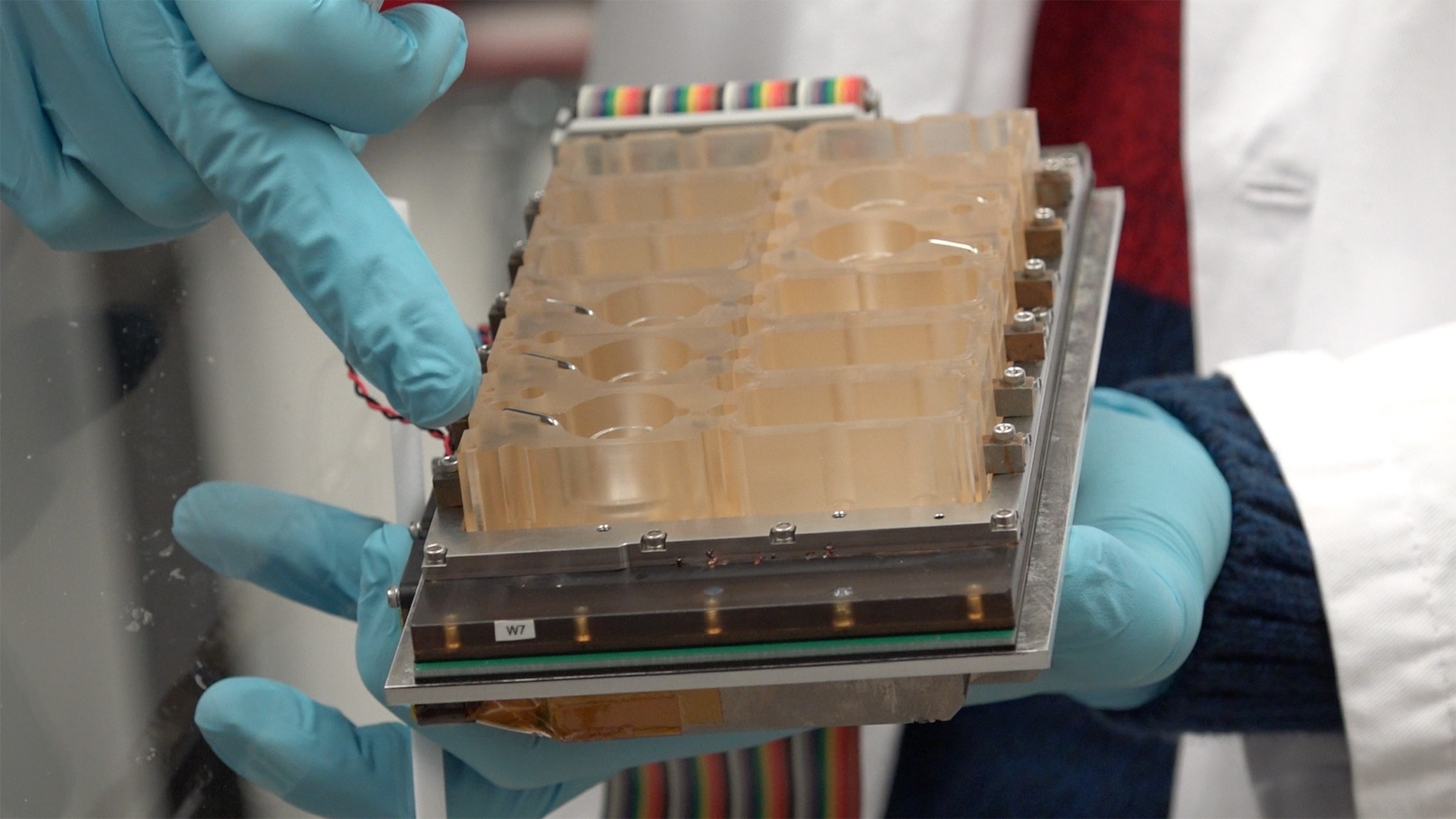
World’s First 'Menstrual Cycle in a Dish' Simulates Female Body
After decades of drug testing on mostly men, a new device may help tailor treatments for different genders.
In a laboratory in Chicago, a palm-size device had its first period.
The device looks much like a Japanese bento box, but instead of dividers for sushi, each compartment contains living tissues. One has a bit of mouse ovary; others hold pieces made from a human uterus, cervix, vagina, fallopian tubes, and liver. The team named the device the EVATAR, a play on the idea of an avatar, or virtual representation of a person, combined with the name of the Bible’s first woman.
Now, scientists report that the device has replicated a full menstrual cycle for the first time. The tissues produced hormones that coursed through the miniature reproductive system, their levels rising and falling over 28 days.
The EVATAR, described this week in Nature Communications, is designed to help scientists better understand how medicines and toxins affect women differently from men. (Read about the gender revolution in National Geographic magazine.)
“It’s really revolutionary technology,” says study co-author Teresa Woodruff, a professor of obstetrics and gynecology at Northwestern University.
Until recent years, many drugs weren't tested on women at all, sometimes with tragic consequences. A sedative discovered in the late 1950s, for instance, was touted as completely safe based on clinical trials. It became popular for easing morning sickness in pregnant women, and by 1960, its sales in some countries rivaled those for aspirin.
But then women began having babies with missing or deformed limbs, much to doctors’ surprise. The sedative, called thalidomide, slowed the growth of blood vessels in the fetus’s limbs during the same stage of early pregnancy when women were taking thalidomide to control their morning sickness.
Doctors had assumed the drug would work the same way in women as in men, and that it couldn’t cross the placental barrier to reach the fetus.
Ironically, the drug caused such a scare that it led the U.S. Food and Drug Administration (FDA) to exclude women of child-bearing age from clinical trials for fear of another tragedy.
That led to decades of drugs released with minimal testing on women. “There was so much harm to women,” Woodruff says.
Women were allowed back into new drug trials in 1993. But women and minorities continue to be underrepresented in these vital clinical tests, resulting in on-going problems. A study in 2001 found that eight out of the last ten drugs pulled from market by the FDA were more harmful to women.
Take, for instance, the bizarre cases of women sleep-walking and even sleep-driving while using the sleep aid Ambien.
In one incident in 2009, a flight attendant in Texas woke up in jail—she had run over three people with her car while asleep on the drug. It turned out that Ambien stays in women’s bodies longer than men’s because of differences in liver function, and the lingering drugs left women in a long-lasting “Ambien zombie” state.
The simple solution was to prescribe women a lower dose, but doctors didn’t know that because the drug maker had studied Ambien’s efficacy only in men.
(Read “How Do Women Deal With Having a Period … in Space?”)
Synchronizing Systems
Woodruff’s new device aims to make it easier to test drugs in a system that mimics the female body, a step toward a much-needed revolution in medicine, says Marianne Legato, who heads the Foundation for Gender-Specific Medicine in New York City.
“I think we’re in a new era of investigation,” she says.
In addition to differences between men and women, fluctuations in estrogen and progesterone throughout women’s menstrual cycles also affect their physiology, Legato says.
“Even the composition of saliva is different at the peak of the cycle,” she says, with higher levels of enzymes for digesting food. “So these hormonal fluctuations are an important factor not only in normal function, but can be really isolated as specific targets for new drug developments.”
(Read “The Risky Lives of Women Sent Into Exile—For Menstruating.”)

Other labs have created “organs on a chip,” but Woodruff’s device goes to the next level, says Christos Coutifaris, a reproductive endocrinologist at the University of Pennsylvania who recently developed a working model of a human placenta.
“She went many steps ahead by putting not just a single organ, but a whole system together,” he says.
Woodruff gathered experts on each part of the reproductive system to build the device; one team worked on the ovary, for example, and another just on the cervix.
Eventually, multiple synthetic systems could be linked up to essentially create a “human in a dish,” some researchers hope, reducing the need to experiment directly on people or animals.
And scientists hope such devices could one day use a patient’s own tissues to tailor treatments to an individual. Woodruff imagines a future in which a person’s medical care might be tailored using a series of personalized avatar devices as their own metabolism changes through the years.
“I think the future of women’s health is bright,” she says.





